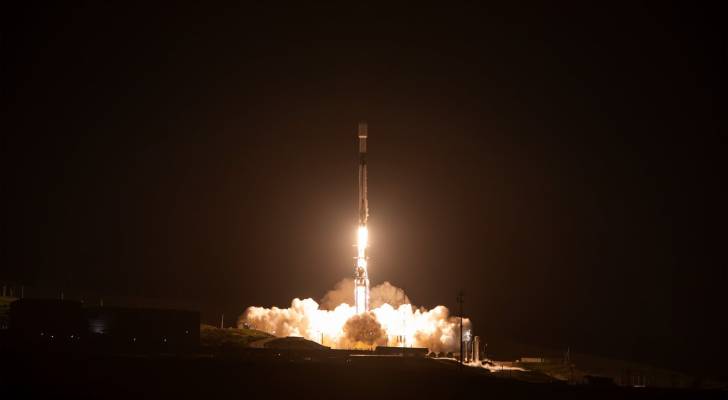NASA’s SPHEREx satellites lift off on a SpaceX Falcon 9 rocket from Vandenberg Space Force Base in California on March 11, 2025. (Photo: SpaceX)
NASA launches missions to explore sun, universe beginning
NASA has launched two missions to explore the origins of the universe and the Sun’s outer atmosphere, the agency announced on March 11.
The SPHEREx observatory and the PUNCH satellite constellation lifted off aboard a SpaceX Falcon 9 rocket from Vandenberg Space Force Base in California.
After multiple delays since February due to technical reviews and weather conditions, the spacecraft is now set to map the entire celestial sky four times over the next two years, collecting data on hundreds of millions of galaxies.
SPHEREx, short for Spectro-Photometer for the History of the Universe, Epoch of Reionization and Ices Explorer, will create a three-dimensional map of the sky, analyzing the light from hundreds of millions of galaxies.
The mission aims to shed light on the universe's evolution following the Big Bang nearly 14 billion years ago. It will also explore the large-scale distribution of galaxies and measure cosmic inflation—a rapid expansion phase that shaped the early universe.
SPHEREx will search for water ice and other molecules essential for life in the Milky Way, which could provide insight into the potential for life beyond Earth.
"Questions like 'How did we get here?' and 'Are we alone?' have fascinated humanity for centuries," said James Fanson, SPHEREx project manager. "It’s remarkable that we now have the tools to start answering them."
Riding alongside SPHEREx, the Falcon 9 rocket also launched four small satellites for NASA’s PUNCH mission (Polarimeter to Unify the Corona and Heliosphere). PUNCH is focused on studying the Sun’s corona and how it expands into solar wind, a stream of charged particles that affects space weather. By monitoring these solar wind interactions, scientists aim to improve solar storm predictions, which can disrupt satellites and power grids on Earth.
“The space between planets isn’t empty—it’s filled with turbulent solar wind,” said Craig DeForest, PUNCH principal investigator. “PUNCH will help us understand how these winds form and how they create space weather that affects us here on Earth.”
Both missions will operate in low Earth orbit. SPHEREx will be managed by NASA’s Jet Propulsion Laboratory, while PUNCH is led by the Southwest Research Institute.
"Everything in NASA science is interconnected, and sending both SPHEREx and PUNCH up on a single rocket doubles the opportunities to do incredible science in space," said Nicky Fox, associate administrator for NASA’s Science Mission Directorate. "Congratulations to both mission teams as they explore the cosmos—from distant galaxies to our nearby star. I am excited to see the data returned in the years to come."
This dual launch marks a significant milestone in NASA's ongoing efforts to deepen our understanding of both the cosmos and the Sun, advancing space science and discovery.




